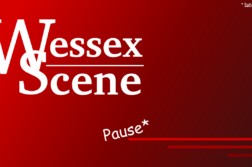The Sexual Offences Act of 1967 was a landmark moment for gay rights in Britain, as it legalised homosexuality for all men over the age of 21. The law itself sounds highly progressive and liberal, but it holds a dark truth as it went on to provide tough regulations regarding homosexuality and did more to hinder than enable homosexual relations in the era. Demonstrated in the rise of male convictions for ‘public indecency’ which quadrupled between 1967-1976, this extensive growth shows the tougher regulations as now the police were more vigilant when spotting ‘homosexuals’.
The whole purpose of the act was actually to protect the “innocent’ from homosexuality, as seen in the law which stated homosexual acts could only take place in private, meaning acts could not even take place in a hotel room or a house with other occupants. The need to hide homosexuality from the public sphere according to the law further portrays the unliberal nature of the act, as it only sserved to make homosexual life harder. The acknowledgement of homosexuals within society made it easier for the public to persecute them.
As stated by Lord Reid, the law would not intervene for those who “chose” to corrupt themselves, as, instead of being treated as a valid sexuality, homosexuality was treated as a disease. This was first seen as lawmakers viewed homosexuals as “unfortunates who suffered from a psychological malfunction”, and is further backed up by statistics from 1963 showing that 93% of people thought homosexuality was a mental illness, taking away the validity of the sexuality. The age of consent for homosexuality was 21, five years older than the age heterosexuals, the young were not to be harmed by homosexuality, this is why it was forced into the private sphere and only made legal to those who could vote (which at the time was only for those over 21).
When discussing the 1967 Sexual Offences Act it is assumed that this legalised homosexuality across the UK, but this is incredibly false, the act only applied to England and Wales. Whilst Scotland only legalised homosexuality in 1980, and Northern Ireland following suit in 1982. The idea that this liberalised gays across the UK is vastly overstated as it was only regionally that the act had any impact. Not to mention, the act only applied to men as lesbianism was never illegal, this demonstrates the state of affairs regarding female sexuality. Females were seen as sexual objects for men and could not experience sexual feelings without it involving a man, it revolves around the central idea of ‘a man’s world’.
To conclude, the act was a great start for the gay rights movement, but its dark truth hides a disgusting reality for homosexuals during this period. The appearance of the act makes it seem that society was growing towards acceptance, but it was only providing further divide by identifying who the homosexuals in society were.



